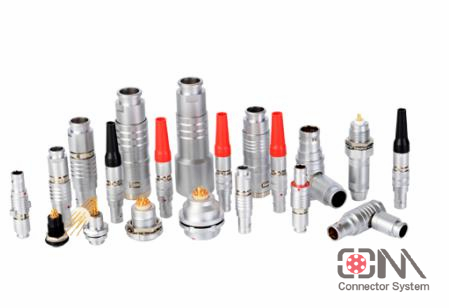
A radio frequency coaxial connector (hereinafter referred to as RFC) is usually regarded as a component that is attached to a cable or installed on an instrument as a component for electrical connection or separation of transmission lines. It is a mechatronics product . Simply speaking, it mainly serves as a bridge.
Compared with other electronic components, RFC has a shorter development history. There are two theories, one is that the UHF connector that appeared in 1930 was the earliest RF connector.
In the second way, BNC is the earliest radio frequency coaxial connector. During the Second World War, due to the urgent needs of the war, the damage of various types of shipboard airborne electronic equipment caused a lot of damage to the US naval and air combat weapons to be repaired. In order to shorten the repair time, the US Navy Department concentrated a part of outstanding scientific research personnel and engineers. In a relatively short period of time, he invented a fast-plugging and separating connector-BNC (Bayonets-Navy Connector), which became the originator of radio frequency coaxial connectors in the world.
With the development of radar, radio and microwave communications, N, C, TNC, etc. series were produced. After 1958, SMA, SMB, SMC and other miniaturized products appeared. In 1964, the US military standard MIL-C-39012 was formulated. General Specification for Radio Frequency Coaxial Connectors. Since then, RFC has begun to develop towards standardization, serialization and generalization.
In more than sixty years, through the joint efforts of professional technicians and engineers from various countries, RFC has formed an independent and complete professional system and has become an important part of the connector family. It is an indispensable key component of the coaxial transmission system. European and American countries’ RFC development technology is in a leading position, and its design, production, testing, and use technologies have become complete and tend to be perfect. Not only has it formed a complete standard system, but also raw materials, auxiliary materials, testing systems, and assembly tools have also been standardized. And conduct specialized scale production.
In terms of assembly automation, RFC generally adopts manual operations or semi-automatic operations due to the characteristics of multiple varieties, small batches, and discontinuities. The most prominent performer is Radiall, France, which has realized fully automated assembly of some of its production lines with huge output and continuous production. Due to the high wages and vacations of French workers, it is the original driving force of Radiall Automation.

The development trend of RF connectors
1. Miniaturization: With the miniaturization of the overall system, the size of the RF connector is getting smaller and smaller .
2 . High frequency: United States HP introduced several years ago had reached 110GHz frequency of the RF connector. The frequency of domestic general products does not exceed 40GHz. The frequency of flexible cables does not exceed 10GHz, and the frequency of semi-rigid cables does not exceed 20GHz.
3 . Multifunctional: In addition to serve as a bridge, the function of both signal processing, such as filtering, modulation phase, mixing, attenuation, detector, such as clipping.
4 . Low VSWR, low loss: to meet the needs weapons systems and precision measurements.
5 . Large capacity, high power: high-capacity, high-power mainly to meet the development needs of the information superhighway.
6 . Surface Mount: Main adaptation SMT technology (surface mount technology) requires development, and help simplify the design of the wiring structure of a multilayer printed circuit board.

